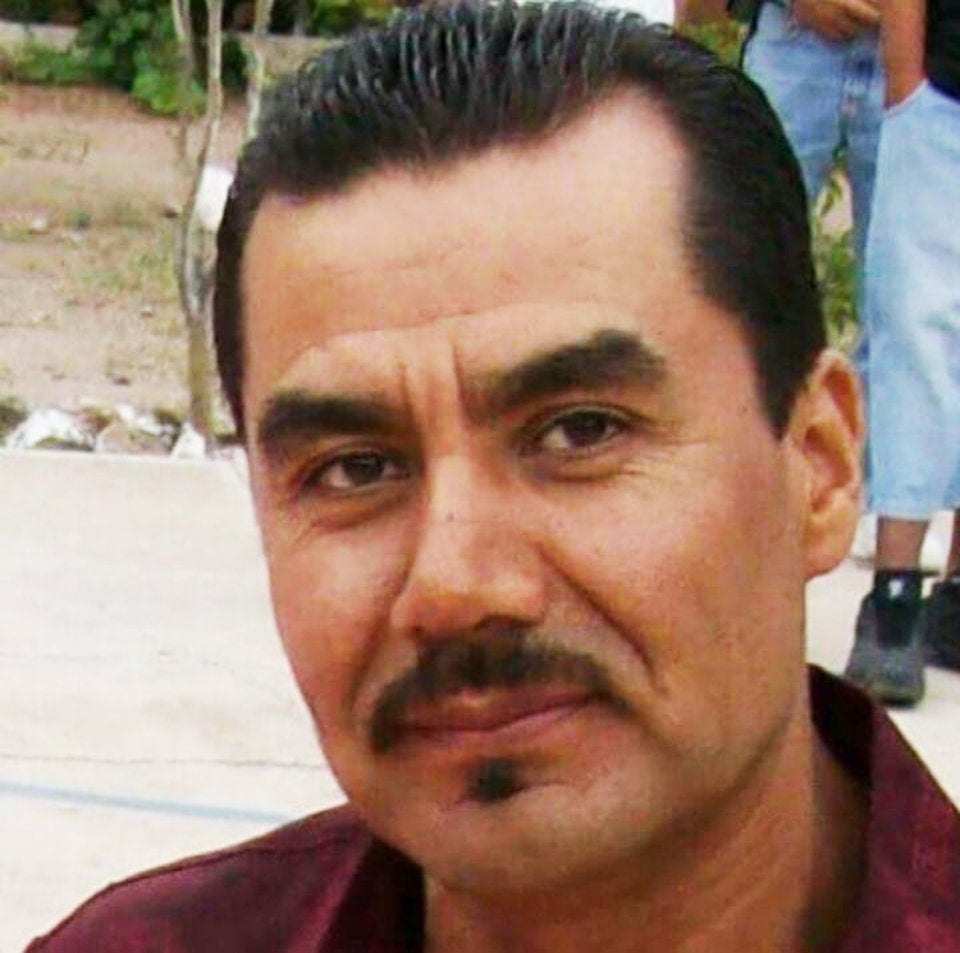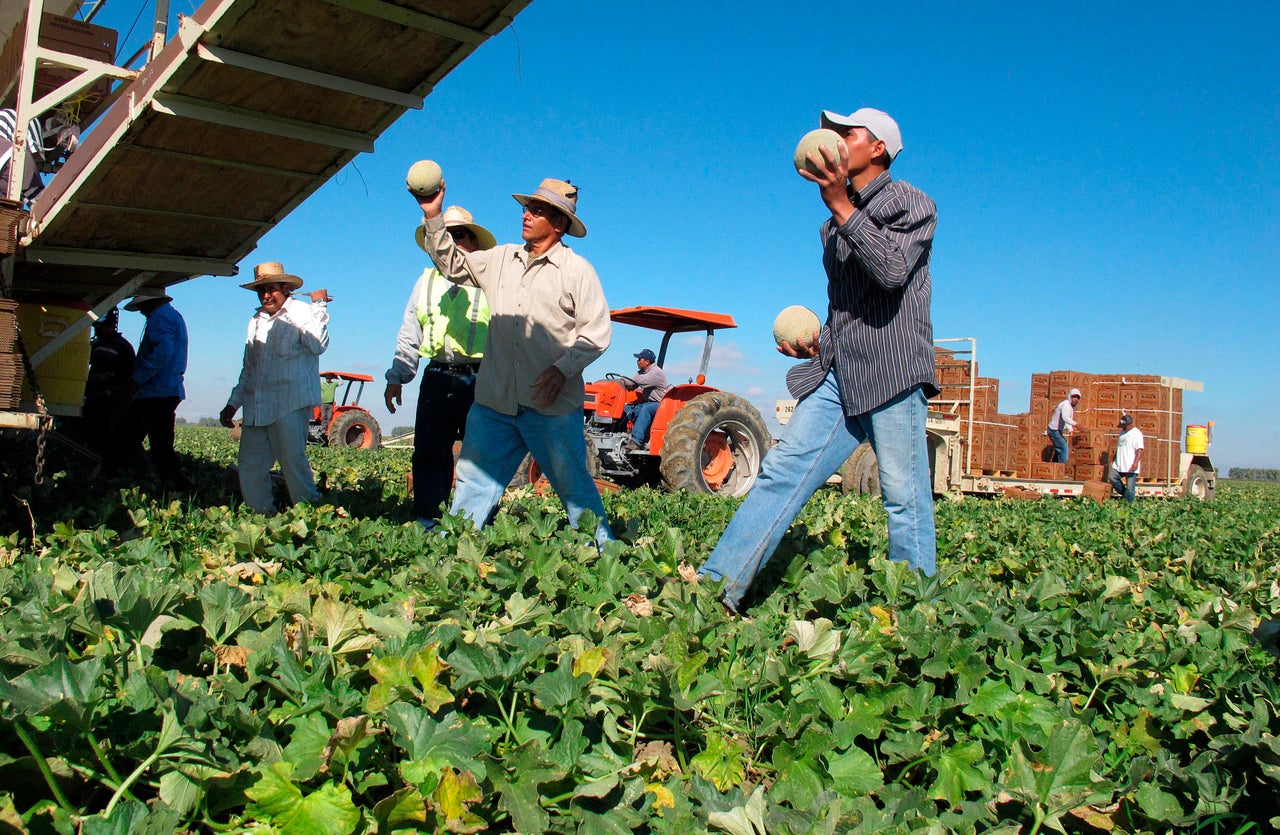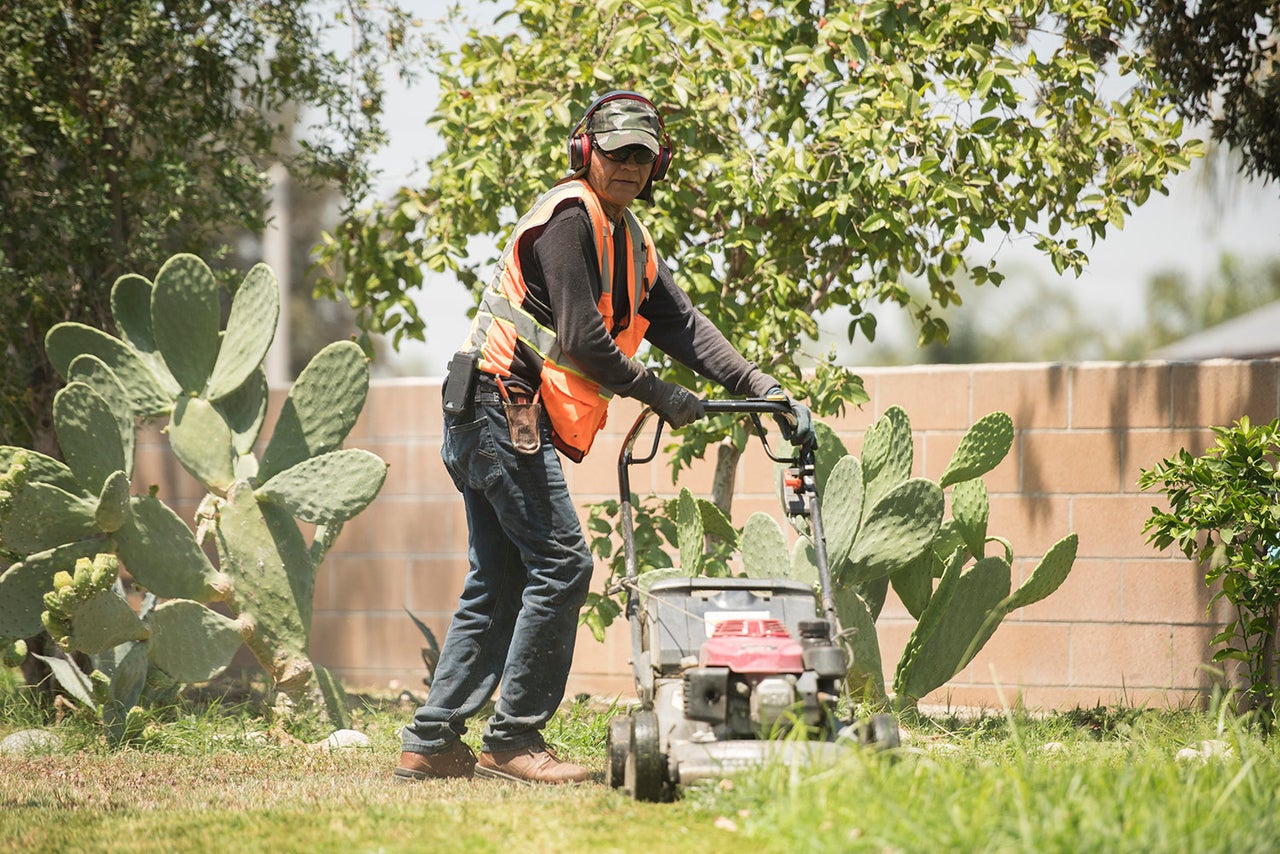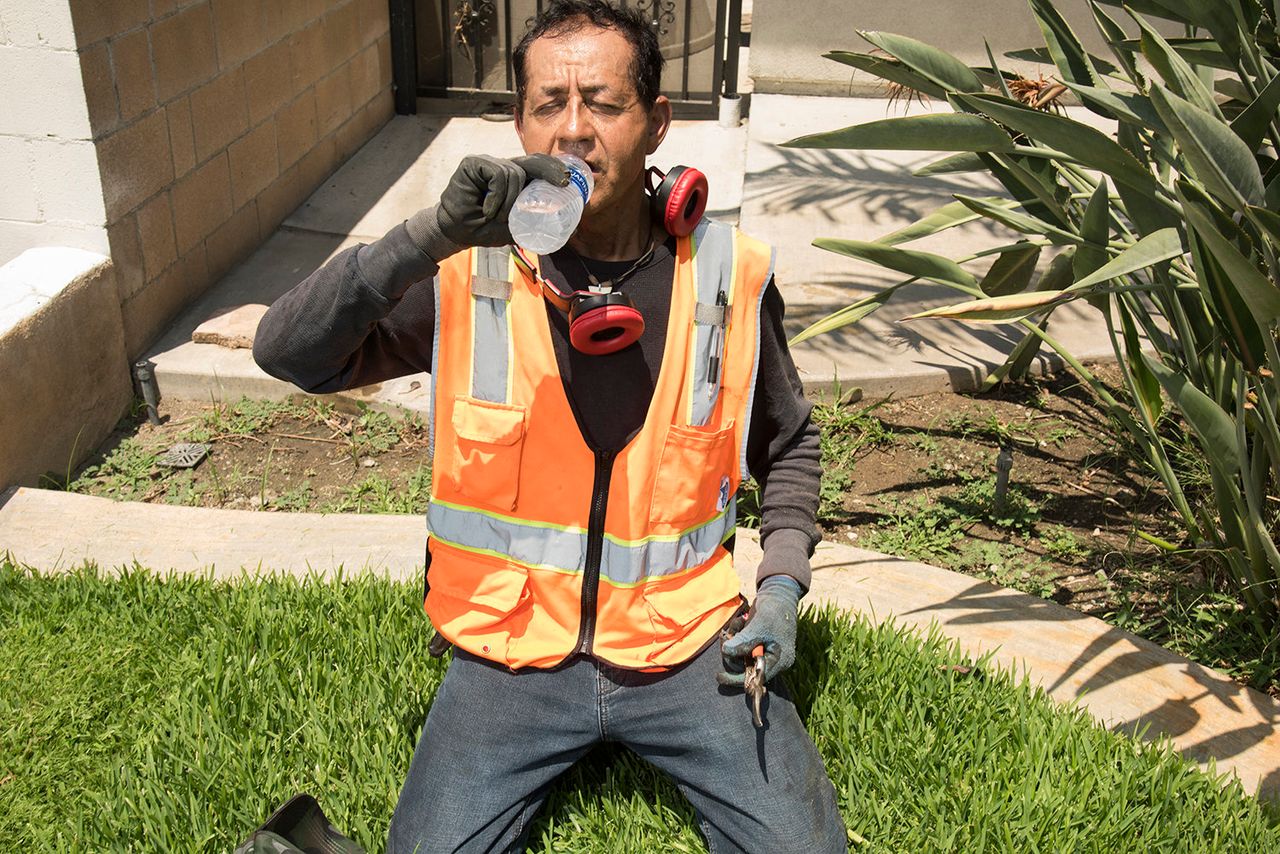On the day that Abdon “Audon” Felix García died, his body temperature hit 108 degrees. He had spent that morning in the summer of 2008 at a central California vineyard loading boxes of table grapes on a truck to be transported to cold storage. García’s body couldn’t recover from the heavy labor in the extreme heat, and he stopped breathing as he sat in the passenger seat on the way to the storage facility.
He was the third farmworker to die of heat stroke in California over a period of less than two months. The temperature that July day was brutal: between 112 and 115 degrees Fahrenheit. In the decade since, from Sacramento through the Central Valley and as far south as the Coachella Valley, the state has seen the number of days with triple digit temperatures only increase.
As heat waves become more severe and climate change exacerbates extreme temperatures, advocates say the United States is facing a public health crisis among agricultural workers. Because of the heat, they must contend with everything from an increased risk of kidney disease, to loss of pay as work schedules are reduced due to the extreme temperatures, to overexertion as some take on multiple jobs to compensate for those lost hours.

“The areas that have traditionally been hot in the past are just getting hotter,” said Marichel Mejia, civic participation and policy coordinator for the United Farm Workers Foundation in Los Angeles. “The workers are feeling this.”
Even With A Heat Standard
Unlike most states, California has had an outdoor heat standard since 2005, requiring employers to provide water, shade and breaks to workers. But it didn’t save Felix Garcia’s life.
The regulation was strengthened in 2015 as farmworkers kept dying and the United Farm Workers filed two lawsuits against the state arguing that California’s Division of Occupational Safety and Health was not properly enforcing the law. The stronger regulation appears to have done some good.
Over the last two-and-a-half years, there have been only two heat illness-related fatalities among outdoor workers reported to Cal/OSHA. According to agency spokesman Frank Polizzi, a nectarine orchard worker died in 2016 while working on a 106 degree day in Fresno County and a landscaper died last year from heat illness in Ontario, a city near LA.
But Anne Katten, pesticide and work safety project director for the California Rural Legal Assistance Foundation, said that while documented heat illness fatalities in the state have dropped since 2015, reports of heat illness cases have increased (which may be due in part to the stronger regulation).
A 2017 study from researchers at the University of California, Davis found that agricultural laborers in the Central Valley who work repeatedly under high temperatures, perform hard labor and don’t drink enough water are at greater risk for heat strain and more likely to develop acute kidney injuries. Other research has shown a direct correlation between climate change and chronic kidney disease.
In the Coachella Valley, during a United Farm Workers outreach campaign this summer, advocates discovered that female workers have been diagnosed with urinary tract infections, which Mejia said was due to lack of regular access to restrooms and drinking water while working under hot conditions.

Some employers have adjusted to the dangers presented by rising temperatures — and the threat of financial penalties for violating California’s standard — by adapting their work practices. Harvesting at night has been common for table grapes for decades, but some agricultural experts are seeing the practice expand to onions, corn and raisin grapes.
Blanca Bañuelos, director of the migrant unit for California Rural Legal Assistance Inc., said some farms are starting work shifts at 11 p.m.
“It is an attempt to continue to get the work done but also deal with the heat,” said Bañuelos, whose organization provides legal services to migrant laborers and low-income people in rural California. (The similarly named foundation provides free legal services and engages in public policy advocacy on behalf of farmworkers and other low-wage workers.)
“They have no way to recover either at night or during the day and so they can get more heat stress that way and be at higher risk of serious heat illness and dehydration.”
- Anne Katten of the California Rural Legal Assistance Foundation
But in the Central Valley, not only have heat waves become progressively more severe in recent decades, nighttime temperatures are growing warmer, making it harder for outdoor workers to cool down from the daytime heat.
In a study he co-published in 2015, climate scientist Roberto Mera found that the region’s nighttime temperatures were nearly 2 degrees Fahrenheit warmer in the 2000s compared to the 1901-1960 average and that the hottest summer days were twice as likely to occur due to climate change. Using weather model simulations of the two time periods that examined sea surface temperatures as well as carbon dioxide and methane levels in the atmosphere, Mera found that heat waves and changes in extreme temperatures during the 2000s can be attributed to the heat-trapping gases that humans have emitted into the atmosphere over the past century.
The worsening heat extremes can be particularly harmful to the health of at-risk populations, such as low-income workers who can’t afford air conditioning or who live in overcrowded shared living spaces with limited or no air conditioning, said Mera, who coordinates the climate change and society program at North Carolina State University.
“They have no way to recover either at night or during the day and so they can get more heat stress that way and be at higher risk of serious heat illness and dehydration,” said Katten of the California Rural Legal Assistance Foundation.
A Deadly Dilemma For Workers
When California implemented the country’s first outdoor heat illness standard in 2005, many praised the effort as a step forward. Under the standard, the state conducted 50 times more inspections resulting in a citation or violation for unsafe heat exposure practices than the federal Occupational Safety and Health Administration did nationwide between 2013 and 2017, according to research by the nonprofit consumer group Public Citizen.
OSHA requires employers to operate workplaces free of hazards and cites companies for heat stress incidents that violate that requirement. But there is no federal heat standard.
“This alarming disparity clearly shows why a specific, enforceable heat standard is urgently needed on a federal level,” Public Citizen wrote in a petition filed in July calling on OSHA to create a national standard for heat stress.

Abdon Felix García’s brother is supporting that effort as is a broad coalition of more than 130 labor, public health and environmental organizations.
“I never wanted his death to be for naught ― that he died and that was it, and that people would continue to lose their lives,” Raudel Felix García told HuffPost in Spanish.
Kern County at the southern end of the Central Valley is among the deadliest places for outdoor workers in California. As temperatures rise and heat standards are enforced, some farmworkers there are struggling to find a balance that protects both their livelihoods and their lives.
When Maria Sanchez of Shafter first began working in the fields surrounding the county seat of Bakersfield about five years ago, the temperatures were hot ― but not as intense as they’ve been over the last two years. (Because Sanchez is undocumented, HuffPost is using a pseudonym to allow her to speak openly.)
In early June, she was working her regular 6 a.m. to 2:30 p.m. shift trimming the leaves around grape clusters at a vineyard near Maricopa. By mid-June, her supervisor began ending the work shifts as early as 11 a.m. to protect workers from the scorching heat.
The shortened hours have cut her weekly pay from an average of $400 to just $230, said Sanchez, a 35-year-old mother of three young children.
“It affects us a lot,” she said in Spanish. “At end of the week we earn less, which affects us as workers because we have bills and we have to pay for childcare.”
“In early June, she was working her regular 6 a.m. to 2:30 p.m. shift trimming the leaves around grape clusters at a vineyard near Maricopa. By mid-June, her supervisor began ending the work shifts as early as 11 a.m. to protect workers from the scorching heat.”
Sanchez understands the importance of preventing heat exposure, but she needs the income. So she’s taken on a second job picking onions from 3 p.m. to 10 p.m. in Arvin, about an hour away from her first job. Picking onions is piecework, she said, “so the harder you work, the more money they give you.”
Sanchez said she pulls the double shift “so we can have enough to survive,” although her schedule comes with a price.
“It’s very hard to work both shifts because it’s time away from my children. They’re not getting the attention they need from me as a parent,” said Sanchez, whose husband works a night shift at a carrot packing plant.
Farmworker advocates are keenly aware of the pressure to keep working despite the dangers. Many organizations ramp up their outreach in the summertime to ensure that workers understand their rights.
“Over the years, the amount of complaints we’ve had to file or the number of calls we’ve gotten has gone down, so there seems to be some level of compliance that’s happening,” said Mejia of the United Farm Workers Foundation. “Nevertheless, we also know that sometimes the laws on the books are not the laws on the field.”
Despite training and education, farmworkers and other vulnerable populations are still going to be reluctant to complain, said Virginia Ruiz, director of occupational and environmental health at Farmworker Justice in Washington, D.C. They face economic pressure, especially if they’re being paid by the piece, and fear of retaliation for exercising their rights, she said.
Ruiz’s group aids migrant and seasonal farmworkers with problems in living and working conditions, as well as health and occupational safety. It also advocates for stronger whistleblower protections and stepped-up enforcement of safety measures.
The Politics Of The Field
Oaxaca, Mexico, native Perla Martinez has labored as a farmworker in Central California for two decades and has learned how to navigate the politics of the field. (HuffPost is allowing her to use a pseudonym to avoid retaliation.)
Four years ago, one of her female co-workers felt dizzy while fastening irrigation tubing on vine-branch wire supports in a vineyard. But her supervisors didn’t believe her. “I know you act like you’re tired to get out of working,” she was told.
“I was working nearby and I told her, ‘Don’t pay attention, you go take a break,’” said Martinez, who had received training on the state heat standard from California Rural Legal Assistance Inc.
Martinez gave the co-worker a phone number for that group and encouraged her to report the violation. But she has seen farmworkers in similar situations hesitate to complain out of fear they won’t be hired for future jobs.
“I tell them, ‘No, you have to turn [violators] in, so they can learn and so that they treat us according to the law,’” said Martinez.
Dealing with uncooperative supervisors is only half the battle. Rising temperatures are pushing some laborers to search for work outside the searing Central Valley heat. Martinez, who lives in Madera, commutes as long as two hours to work in the cooler coastal region of Monterey County.
But first, she wakes up at 2:30 a.m. to make fresh tortillas for her husband and prepare breakfast for her three teenage sons. Since she spends most of her day working or commuting, she leaves the boys notes to remind them she loves them.
“Do your homework when you get home from school,” she writes. “Mi’jos, I love you with all my heart.”
Raudel Felix García lives and works in Fontana as well as the surrounding Inland Empire region, which is known for its scorching temperatures. As global warming makes working conditions worse, he said he fear more people will be in danger. The best way to save lives, he said, is to ensure that supervisors enforce heat regulations, whether it’s the California standard or a new national one.
“Supervisors are the key to make sure employees stop working if they’re not able to keep working because of the weather,” said Garcia.
In the meantime, workers like Sanchez are watching the weather and measuring the dangers. She said she plans to finish the harvesting season this summer, but she won’t risk her life.
“If the heat continues next year at the same level, I think I will switch to a packing plant where it’s year-round work,” said Sanchez. “And it’s less hot.”
